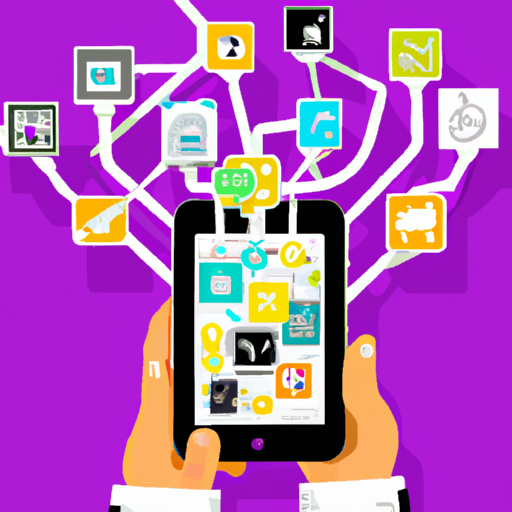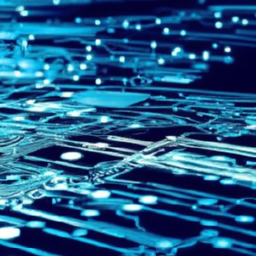Telecommunications Industry Trends
In the ever-evolving world of technology, the telecommunications industry is at the forefront, constantly shaping the way we communicate and connect. From the rise of 5G technology and the Internet of Things (IoT) to the increased demand for faster internet speeds and seamless connectivity, the telecommunications industry is experiencing significant shifts. As consumer behaviours and preferences continue to change, staying up-to-date with the latest industry trends becomes crucial for businesses to remain competitive in this dynamic landscape. In this article, we will explore some of the key telecommunications industry trends that are driving innovation and reshaping our digital future.

Table of Contents
5G Networks
5G networks have revolutionized the telecommunications industry by offering increased data speeds, lower latency, and greater network capacity. With 5G, you can experience lightning-fast download and upload speeds, allowing you to stream high-definition videos, download large files, and browse the internet with unmatched efficiency. This increased speed is a game-changer, especially for users who heavily rely on data-intensive applications.
But it’s not just about speed. 5G networks also boast significantly lower latency compared to previous generations of networks. Latency refers to the delay between sending and receiving data, and a lower latency enables seamless real-time communication and responsiveness. This low latency is essential for emerging technologies like self-driving cars, where split-second decision-making is crucial for ensuring safety on the roads.
Furthermore, 5G networks provide a greater network capacity, which means they can handle a significantly higher number of connected devices simultaneously. As the Internet of Things (IoT) continues to grow, with billions of devices getting connected to the internet, 5G networks can efficiently manage this surge in connected devices without compromising on performance.
Internet of Things (IoT)
The integration of IoT devices has become increasingly prevalent in our daily lives, and 5G networks play a pivotal role in enabling seamless connectivity for these devices. With IoT, everyday objects are embedded with sensors, software, and connectivity to collect and exchange data, resulting in smarter and more efficient systems.
5G networks offer improved connectivity for IoT devices, ensuring reliable and uninterrupted communication between devices. This enhanced connectivity is essential in various industries such as healthcare, manufacturing, and transportation, where real-time data exchange is critical for efficient operations.
Moreover, 5G-powered IoT enables enhanced data analytics by providing a massive amount of data in real-time. This data can be analyzed and utilized to gain valuable insights, optimize processes, and make informed decisions. From smart homes to smart cities, the integration of IoT devices in conjunction with 5G networks paves the way for a more connected and intelligent future.
Cloud-based Services
Cloud-based services have revolutionized the way businesses operate and individuals access and store their data. The scalability and flexibility of cloud solutions have made them a popular choice for organizations of all sizes.
With the advent of 5G, cloud-based services are set to take a giant leap forward. The increased speed and lower latency of 5G networks enable faster and more efficient access to cloud resources, enhancing productivity and collaboration. Whether you are working remotely or accessing critical business applications, 5G-powered cloud services ensure a seamless and reliable experience.
In addition to improved accessibility, 5G networks contribute to the cost-effectiveness of cloud-based services. By utilizing the high network capacity and low latency of 5G, organizations can reduce their reliance on expensive infrastructure and hardware, opting for cloud solutions instead.
Furthermore, 5G networks bolster data storage and security in cloud-based services. The ability to transmit data quickly and securely over the network allows for improved data backup, disaster recovery, and enhanced security measures. With 5G, you can trust that your sensitive information and valuable data are secure, reducing the risk of data breaches and unauthorized access.
Artificial Intelligence (AI)
AI has already made a significant impact in various industries, and with the integration of 5G networks, its potential is further unlocked. 5G networks facilitate faster and more reliable data transfer, enabling AI algorithms to process and analyze data with unparalleled speed and accuracy.
One of the key advantages of AI powered by 5G is automated processes. AI algorithms can efficiently automate routine tasks, freeing up human resources to focus on more complex and strategic endeavors. From chatbots providing customer support to automated data analysis, AI powered by 5G networks enables businesses to streamline operations and enhance efficiency.
Moreover, AI powered by 5G networks can provide an enhanced customer experience. With advanced data processing capabilities, AI algorithms can personalize user experiences, anticipate customer needs, and deliver tailored recommendations. This personalized approach not only improves customer satisfaction but also helps businesses build long-lasting relationships with their customers.
Another area where 5G and AI intersect is predictive analytics. With the ability to process and analyze large volumes of data in real-time, AI algorithms can predict future trends, identify potential issues, and optimize decision-making. Whether it’s predicting consumer behavior or optimizing supply chain management, the combination of AI and 5G networks opens up new horizons for businesses across industries.
Virtual and Augmented Reality
Virtual and augmented reality have gained traction in recent years, offering immersive experiences and transforming various sectors, from entertainment to education and beyond. 5G networks have the potential to catapult virtual and augmented reality to new heights, thanks to their increased data speeds, lower latency, and greater network capacity.
With 5G networks, you can experience immersive communication like never before. Whether it’s collaborating with colleagues remotely, attending virtual meetings, or connecting with loved ones in a virtual environment, 5G-powered virtual and augmented reality technologies bring us closer together, regardless of physical distances.
Furthermore, 5G networks enable enhanced visualization in virtual and augmented reality applications. From architectural design and simulation to medical training and entertainment, the high bandwidth and low latency of 5G networks ensure crystal-clear visuals and a seamless user experience.
Additionally, the combination of 5G networks and virtual/augmented reality has immense potential in training and simulation applications. Whether it’s training employees in high-risk environments or allowing students to explore complex concepts through realistic simulations, 5G-powered virtual and augmented reality can significantly enhance learning and skills development.
Edge Computing
Edge computing is a paradigm shift in computing architecture, moving away from the centralized processing model and bringing computational power closer to the data source. 5G networks play a crucial role in enabling the benefits of edge computing, offering lower latency, faster processing, improved reliability, and reduced network congestion.
The lower latency and faster processing offered by 5G networks make edge computing a reality. By processing data closer to the source, rather than sending it to a remote data center, latency can be significantly reduced. This is vital for time-sensitive applications, such as autonomous vehicles, where split-second decision-making is crucial.
Moreover, edge computing powered by 5G networks ensures improved reliability. With data being processed closer to the edge, there is a reduced risk of network outages disrupting critical operations. This reliability is essential for applications such as industrial automation, where even a brief interruption in connectivity can have severe consequences.
Additionally, edge computing powered by 5G networks helps reduce network congestion. By distributing processing tasks to the edge, the overall network load is decreased, resulting in smoother and more efficient data flow. This is particularly important in crowded areas, where a large number of devices are connected and competing for network resources simultaneously.
Cybersecurity
In an increasingly connected world, cybersecurity has become a top priority for individuals and organizations alike. 5G networks bring with them advancements in cybersecurity, offering protection against sophisticated cyber threats, adoption of advanced encryption techniques, and enhanced network monitoring capabilities.
Sophisticated cyber threats are persistent and ever-evolving. With 5G networks, organizations can leverage advanced threat detection and prevention capabilities to safeguard their sensitive data and critical infrastructures. The increased network capacity and low latency of 5G networks enable real-time threat analysis, ensuring rapid response to emerging threats.
Furthermore, 5G networks adopt advanced encryption techniques to protect data during transmission. As data travels through the network, it is encrypted to ensure confidentiality and integrity. This encryption, combined with the speed and reliability of 5G, provides a robust security framework for organizations across industries.
Enhanced network monitoring is another cybersecurity benefit brought by 5G networks. With increased data speeds and low latency, network administrators can effectively monitor network traffic, identify anomalies, and mitigate potential security risks. This proactive approach to network security enhances threat prevention and strengthens overall cybersecurity posture.
5G Edge Computing
The combination of 5G and edge computing capabilities opens up new possibilities in terms of faster processing, improved network efficiency, and enhanced user experiences. By integrating edge computing with 5G networks, organizations can unlock the true potential of both technologies.
One of the key advantages of 5G edge computing is faster processing and response times. With edge computing infrastructure deployed in close proximity to the network edge, processing tasks can be offloaded from the central data centers, resulting in reduced latency and improved overall performance. This is especially critical for real-time applications, such as IoT devices and autonomous systems.
Furthermore, 5G edge computing improves network efficiency. By processing data at the edge, rather than sending it back and forth to a centralized data center, network resources are optimized, resulting in reduced network congestion and improved bandwidth utilization. This efficiency is vital for the growing number of connected devices and data-intensive applications that require real-time insights.
Moreover, 5G edge computing enhances user experiences. By leveraging the speed and low latency of 5G networks and the computational power of edge devices, organizations can deliver personalized and immersive experiences to their users. From augmented reality shopping experiences to real-time language translation, 5G edge computing enables innovative applications that delight and engage users like never before.
Automation and Robotics
Automation and robotics have transformed industries, leading to streamlined operations, efficient infrastructure management, and reduced manual intervention. With the integration of 5G networks, the potential of automation and robotics is further enhanced.
Automation powered by 5G networks enables organizations to automate routine tasks, reducing repetitive manual work and freeing up resources for more complex and strategic endeavors. From manufacturing and logistics to customer service and data analysis, 5G-powered automation improves productivity, efficiency, and accuracy.
Moreover, 5G networks support the seamless connectivity required for robotics. With low latency and high network capacity, robots can communicate and collaborate in real-time, enhancing their ability to perform complex tasks. This is particularly important in scenarios such as collaborative robots working alongside human workers or autonomous drones performing inspections and deliveries.
Additionally, 5G-powered automation and robotics contribute to efficient infrastructure management. Whether it’s remotely monitoring and controlling infrastructure assets or optimizing energy consumption in smart buildings, the real-time connectivity offered by 5G networks enables organizations to efficiently manage their assets and resources.
Telehealth
Telehealth, or remote healthcare services, has gained significant traction, particularly during times of crisis or when access to medical expertise is limited. 5G networks play a crucial role in advancing telehealth, offering increased access to medical expertise, real-time monitoring, and diagnostics.
With 5G-powered telehealth, individuals can remotely connect with healthcare professionals and access medical expertise from the comfort of their homes. This is especially valuable for individuals in remote areas or those with limited mobility. 5G networks ensure reliable and uninterrupted connectivity, ensuring a seamless telehealth experience for patients and healthcare providers alike.
Furthermore, 5G networks enable real-time monitoring and diagnostics. From wearable devices that track vital signs to remote diagnostic tools that enable physicians to analyze patient data in real-time, 5G-powered telehealth provides timely and accurate information to healthcare professionals. This real-time data exchange ensures prompt and appropriate medical interventions, potentially saving lives and improving patient outcomes.
In conclusion, the integration of 5G networks with various emerging technologies has the potential to revolutionize the telecommunications industry and reshape our daily lives. From enhanced connectivity and faster data speeds to improved security and reliability, 5G networks pave the way for a more connected, intelligent, and efficient future. Whether it’s IoT devices, cloud-based services, AI, virtual and augmented reality, edge computing, cybersecurity, automation and robotics, or telehealth, 5G networks are at the heart of these transformative trends. As we embrace these advancements, we can look forward to a world where technology seamlessly integrates into our lives, bringing unprecedented convenience, productivity, and innovation.






